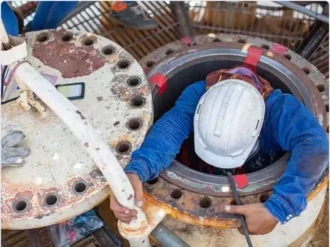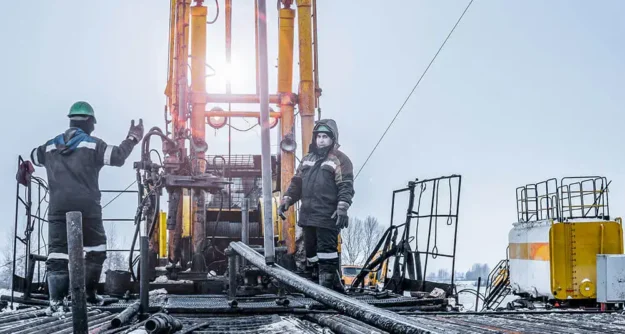Introduction
Tank cleaning and maintenance is identified as an extremely dangerous activity. People working in such confined spaces are exposed to a number of life-threatening hazards that, if not managed properly, can easily lead to injury or even death. The only way to ensure the safety and health of staff working on the maintenance and inspection of tanks is through rigorous safety training.
Potential Hazards
The most common risks faced by tank inspection and maintenance crews are:
Explosions and Fires.
Cleaning out a tank intended for the storage of combustible materials presents fatal work hazards. Quite often, a small source of ignition, such as a spark or a heat source, can lead to the outbreak of a dangerous fire. This is a high-occurrence risk that only requires a mixture of flammable vapors and a little over 8% oxygen to be active. Cleaning out sludge or scale can often release trapped vapor, which is likely to cause a safe atmosphere to instantly become flammable. Because the space is an enclosed one, tank fires can lead to a chain reaction that ends in a dangerous explosion.Hazardous Chemicals.
The majority of containers that require regular inspection are used for storing toxic compounds, including hydrogen sulfide, benzene, or lead-based substances. Any form of exposure to the latter, such as accidental ingestion, inhalation, or even skin contact, will have immediate adverse health effects; among them are vomiting, diarrhea, burns, drowsiness, or, in cases of severe exposure, death. Furthermore, many of these dangerous chemicals are known to have serious long-term health effects that lead to harmful mutations or cancer.Lack of Oxygen.
Whenever oxygen levels in a work environment drop below 20%, specialized breathing equipment is necessary for maintenance personnel. In many instances, oxygen levels have to be maintained under 10% of the atmosphere, so as to render the setting inert and safe to work in. Exposure to noxious vapors and suffocation are distinct possibilities in these instances, which is why inspection crews often work supervised.Exposure to Radiation.
Aside from being toxic to human health, certain dangerous chemicals are also classified as naturally occurring radioactive materials (NORM). Slop, ballast, or crude oil systems are such examples of NORM, while the source of radioactivity is commonly traced back to formation water. The latter carries on throughout storage systems, depositing dangerous radioactive scale through pipes and tanks. Maintenance technicians will have to clean this scale in order to maintain equipment in working conditions.
Incident Prevention
Each and every one of the hazards associated with tank inspection and maintenance is a potentially life-threatening risk that must be closely monitored and addressed in a tank cleaning project. Without appropriate safety training, employees tasked with cleaning a storage tank or system are a liability for co-workers, for their employer, and for themselves.
Special protective equipment is a mandatory requirement for people working in tank maintenance. Employees must know how to effectively use their gear in order to diminish the health risks associated with their work environment. In certain instances, respirators, oxygen masks, and/or tanks will be necessary.
Aside from personal protective equipment (PPE), maintenance crews will be able to increase their safety with the help of appropriate safety training courses. The latter will assist workers in developing a comprehensive perspective on the occupational hazards associated with each storage tank and taking the necessary steps to prevent the risks from endangering their lives or that of their colleagues.
Recommended Safety Courses



What You Can Do to Stay Safe
Given the numerous hazards associated with tank maintenance and inspection, the only way to stay safe while on the job is to become aware of the risks and constantly take steps to reduce them. Employers in Canada are legally required to inform their personnel with regards to the full range of their occupational hazards. Furthermore, they also have to provide appropriate safety training to account for the latter.
To consult a more comprehensive list of safety courses best suited for tank inspection and maintenance, please visit our Oil and Gas industry page.

